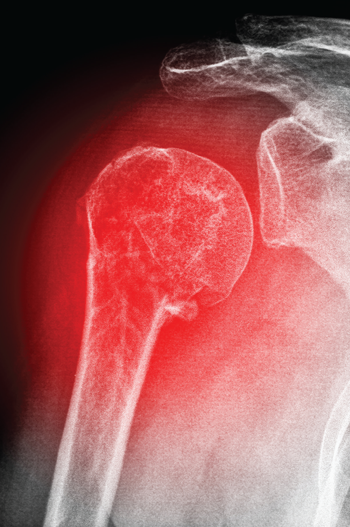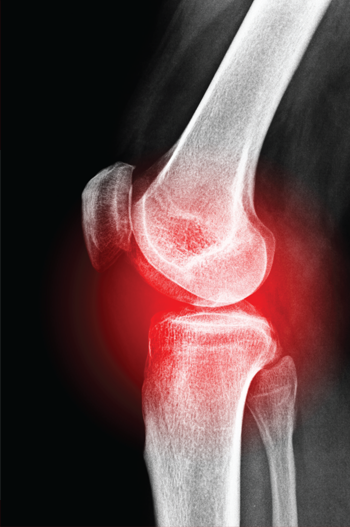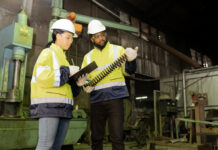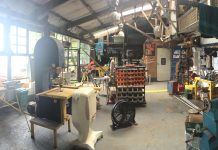Musculoskeletal injuries that affect soft tissues such as muscles, tendons, ligaments, joints, and spinal discs are costing American businesses upwards of $50 billion annually in lost wages, lost productivity, and compensation costs, according to the National Research Council and the Institute of Medicine. Strains and sprains, for example, are the leading cause of lost work days for manufacturers and account for 40 percent of injuries that require days away from the job, according to the Bureau of Labor Statistics.
These figures cannot be ignored. Businesses can help limit their exposure to these problems by understanding the ergonomic risk factors throughout their facility.
 Know the Risk Factors
Know the Risk Factors
Four main ergonomic risk factors may be prevalent in a manufacturing setting:
1. Posture: Neutral posture is generally standing upright, head balanced over shoulders and hips, with the shoulders relaxed and arms in close to the body. When a person needs to maintain an awkward posture for work-related purposes, the body works harder and tires more quickly, causing serious wear and tear. Positions that place stress on the body include reaching above shoulder height, kneeling, squatting, leaning over a counter, and twisting the torso while lifting.
2. Force: The greater the weight or resistance to movement of an object, the more force it takes to move it. Exerting excessive force can include lifting heavy objects, pushing or pulling heavy loads, and maintaining control of equipment or tools.
3. Frequency: The more a worker repeats a movement or forceful exertion, the less time the body has to recover from that effort, which can lead to fatigue.
4. Duration: It takes concentrated muscular effort to maintain a particular grasp or posture for a long period of time.
Reviewing injury and illness logs, workers’ compensation records, and employee reports can help front-line managers get a better idea of where potential problem areas lie. Separately, each factor can cause issues, but combining these factors can greatly increase the risk of injury.
Take Action
Many manufacturers have recognized the need and already have some type of plan in place to help handle ergonomics issues as they arise, but the most effective safety plan is executed even before an employee is hired. Thoughtful interviews can help confirm that job candidates have sufficient experience and capabilities for the position.
 Once the appropriate person for the job is found, taking the time to onboard and orient that worker can also help maintain a safe workplace. New employees are injured more frequently than those with more on-the-job experience. One in four employees in the manufacturing industry suffers an injury within the first year of employment, according to a 2015 Travelers study. A few ways to help a new employee adapt safely to the working environment include properly defining the roles and responsibilities for each employee position and job function; implementing safety practices at the highest level; remedying safety hazards as they arise; and having co-worker mentors or supervisors serve as examples of safe behavior.
Once the appropriate person for the job is found, taking the time to onboard and orient that worker can also help maintain a safe workplace. New employees are injured more frequently than those with more on-the-job experience. One in four employees in the manufacturing industry suffers an injury within the first year of employment, according to a 2015 Travelers study. A few ways to help a new employee adapt safely to the working environment include properly defining the roles and responsibilities for each employee position and job function; implementing safety practices at the highest level; remedying safety hazards as they arise; and having co-worker mentors or supervisors serve as examples of safe behavior.
Even with a culture in place that stresses the importance of safety, ergonomics issues can arise throughout time as job tasks evolve. For example, a minor task that began as a slight back bend can quickly become strenuous, depending on the size and type of product the employee is handling. One way to help manage issues as they come up is to conduct periodic ergonomic reviews of facilities, specific workstation designs and work practices, and overall production processes. Training managers or floor supervisors to look for warning signs may help tackle issues early on. “Red flags” include workers modifying their tools, equipment, or work area; shaking their arms and hands; rolling their shoulders; taping up hand tools, or bringing products such as weight belts or wrist braces into the workplace.
If a problem is detected, supervisors should conduct an in-depth ergonomic analysis of a job task or work area to identify root causes and potential solutions that can help prevent injuries. One telling aspect to focus on during this analysis is the relationship between the worker, the task, the tools, and the work environment. Improvements to the environment won’t always require obtaining new equipment, but can often be achieved by changing the workstation arrangement, equipment orientation, and employee work habits and responsibilities.
If the situation in the workplace allows, job rotation or changes to the work/rest cycle may be other effective solutions. By cross-training employees on a range of tasks with different work demands, employers can help limit the cumulative exposure to specific physical or mental stressors.
Encouraging employees to report injuries immediately can help workers to recognize injury symptoms and provides a mechanism to track injuries and trends. Early reporting, diagnosis, and intervention can help to minimize the severity of musculoskeletal injuries, help improve treatment effectiveness, and also, help decrease associated costs.
Consult with Specialists
Certified professional ergonomists and risk control specialists can be a helpful resource to manufacturers. These professionals can share best practices and help to evaluate ergonomic needs. By developing a culture of safety, manufacturers may help avoid employee injuries, and may also better control and reduce medical costs, maintain overall productivity, increase employee engagement, and ultimately create a competitive advantage.
Bob Weneck is a Senior Ergonomics Consultant and is a member of the Travelers Human Factors and Ergonomics Unit. He is responsible for working with clients to reduce workers compensation costs and ergonomics issues, and to develop ergonomic improvement processes. Services provided include ergonomic program and task force development, training delivery, and developing solutions for workstations, hand tools and material handling tasks.
Mr. Weneck joined Travelers after 29 years of applied ergonomics experience in the imagining industry at Eastman Kodak Company. During his tenure at Eastman Kodak, Mr. Weneck held positions as a Senior Ergonomist, Ergonomics Group Leader and Corporate Ergonomist. Mr. Weneck has experience working with manufacturing, engineering, field service organizations, skilled trades, research and development organizations and in office environments.
Mr. Weneck has a BS degree in Human Factors Engineering from Wright State University. He is a Board Certified Professional Ergonomist (CPE).













